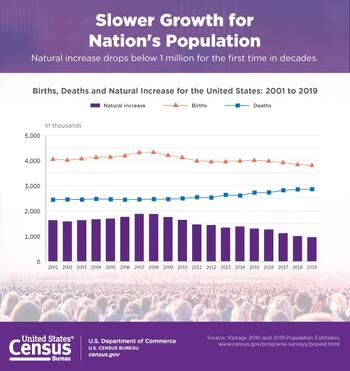
The United States population grew just 0.48% in the year ended July 1, 2019, according to population estimates released on the last day of the year. This is a full one-third decline from the 0.72% growth in 2014. Even that higher rate, typical for the first four years of the decade, was well below the 0.93% rate between 2000 and 2010. This was driven by a decline in the natural growth rate (births minus deaths), which fell from 1,461,000 in 2011 to 957,000 in 2019. According to the Census Bureau, this is the first time in decades that fewer than births have exceeded deaths by less than 1,000,000. Net international migration was less of a factor, falling from 774,000 in 2011 to 595,000 in 2019, a drop of 23%.
These trends were even more evident in the nation’s most populous state. The US growth rate declined by a third, but California’s growth rate fell by a remarkable 85%. In 2014, California grew by 0.83%. By 2019, growth had dropped to 0.13%, little more than one-quarter of the national rate (Figure 1). In fact, for the first time in its history, California could lose a seat in Congress after the 2020 census as a result of this slower growth.
Net Domestic Migration Between Census Regions
Further, the nation continues to move principally to the South and secondarily to the West. Since 2010, 4.1 million residents have moved from the Northeast and the Midwest to the South and West (Figures 2 and 3). Approximately 82% of these moves have been to the South. In the last year, the South accounted for approximately 89% of the net domestic moves between regions.
State Population Trends
There were only 51,000 more residents in California in 2019 than 2018. This is a substantial drop from the more than 300,000 gain in each of the first five years of the decade. California placed 12th in population growth in 2019. Much smaller states grew faster in total numbers than California, such as South Carolina and Tennessee. Nevada, with only 1/13th the population of California, also gained more people. (Figure 4).
The four leading states in percentage population growth in the last year were adjacent to one another in the West (Figure 5). Idaho ranked number one, followed by Nevada, Arizona, and Utah. Idaho’s annual growth rate was 2.1% and the other three states exceeded 1.5%. California ranked 37th, with an annual growth rate of little more than 0.1%.
Ten states actually lost population over the past year. West Virginia lost 0.7% of its population, Alaska 0.5%, Illinois and New York 0.4% and Hawaii 0.3% (Figure 6).
Domestic Migration Trends
California’s net domestic migration losses accelerated over the last year, reaching 203,000 (Figure 7), up about a third from last year’s 155,000. This was the fifth straight year in which net domestic migration from the Golden State increased. For the first time since 2007, California’s net domestic migration loss exceeded that of New York.
As a result of its substantial loss in 2019, California has now displaced Illinois as the state with the second greatest net domestic outmigration in the nation. New York has lost a net 1,379,000 residents to other states, compared to California’s loss of 912,000 and the Illinois loss of 866,000 (Figure 8). Earlier in the decade, Illinois lost more than twice as many net domestic migrants as California for two years in a row. Last year, California lost nearly twice as many net domestic migrants as Illinois.
The top net domestic migration gains in the last year were in Florida and Texas both with more than 120,000 Arizona with more than 80,000 North Carolina with more than 60,000 (Figure 9).
Over the decade Florida led domestic migration. Florida has gained 1,290,000 new net residents from other states followed by Texas at 1,146,000, North Carolina at 476,000 in Arizona at 454,000. South Carolina, Colorado, Washington, Tennessee and Georgia also gained more than 250,000 (Figure 10).
Pattern of Decades with Slowing Growth and California as a Northeastern State
This year’s state population estimates show that the nation’s population growth is dropping quickly. They also show that the movement of people from the Northeast and Midwest to the South and West, underway since World War II, is continuing. The one exception is in the West, where California, once the unchallenged leader appears to have taken on the growth and migration characteristics more typical of a Northeastern state.
Top Image: Census.gov, under Public Domain.
Wendell Cox is principal of Demographia, an international public policy and demographics firm. He is a Senior Fellow of the Center for Opportunity Urbanism (US), Senior Fellow for Housing Affordability and Municipal Policy for the Frontier Centre for Public Policy (Canada), and a member of the Board of Advisors of the Center for Demographics and Policy at Chapman University (California). He is co-author of the "Demographia International Housing Affordability Survey" and author of "Demographia World Urban Areas" and "War on the Dream: How Anti-Sprawl Policy Threatens the Quality of Life." He was appointed by Mayor Tom Bradley to three terms on the Los Angeles County Transportation Commission, where he served with the leading city and county leadership as the only non-elected member. Speaker of the House of Representatives appointed him to the Amtrak Reform Council. He served as a visiting professor at the Conservatoire National des Arts et Metiers, a national university in Paris.
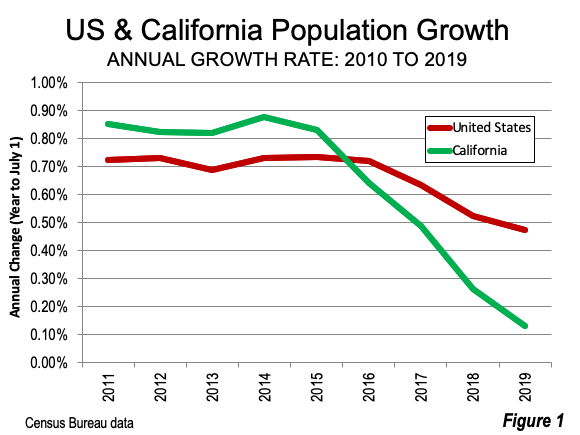
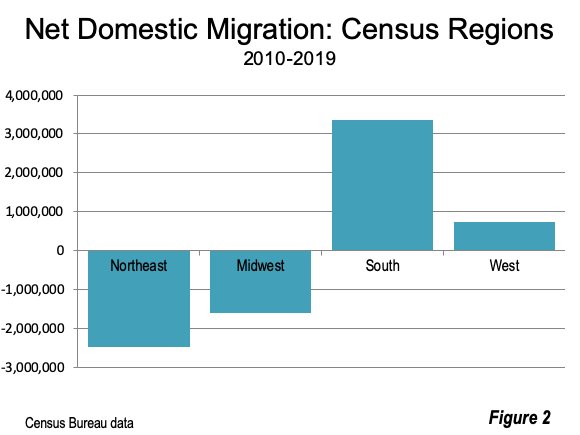
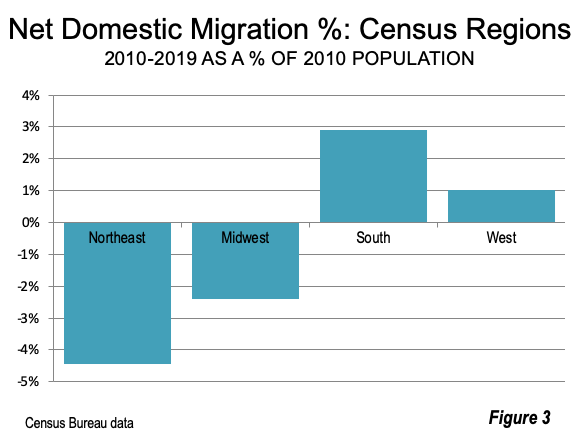
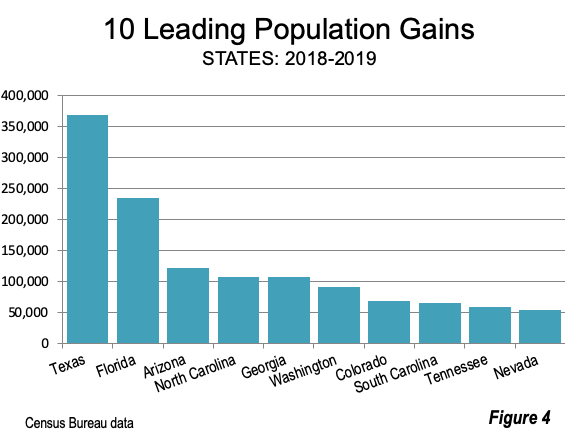
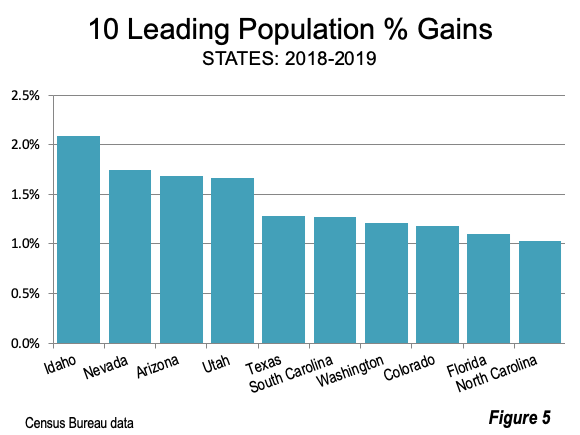
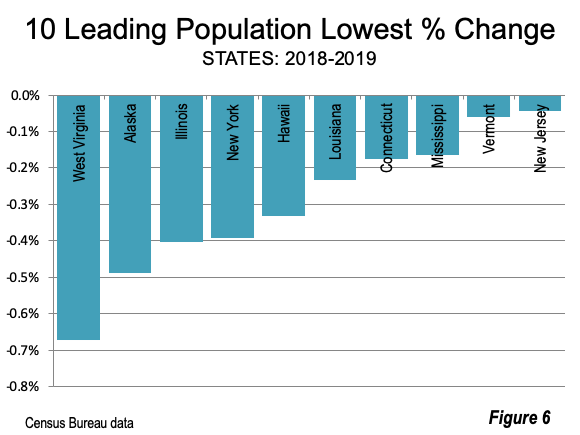
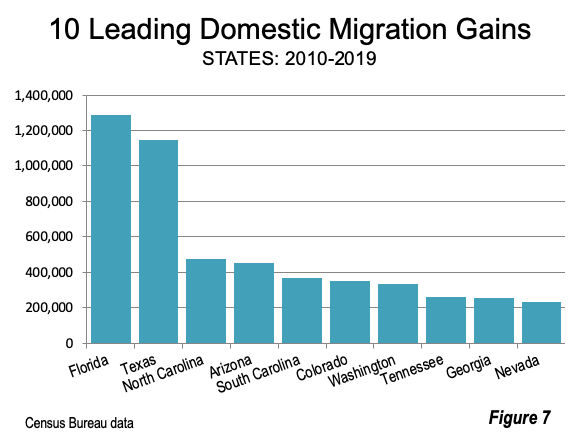
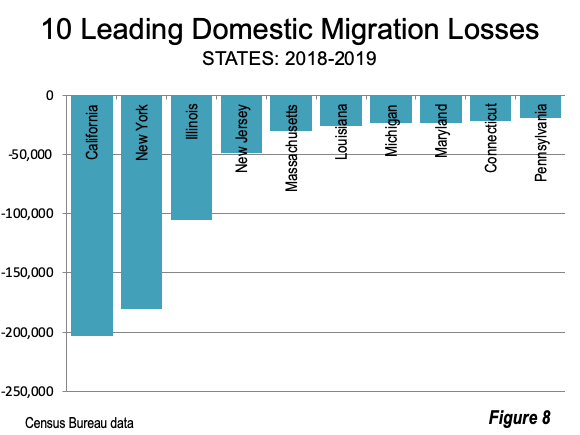
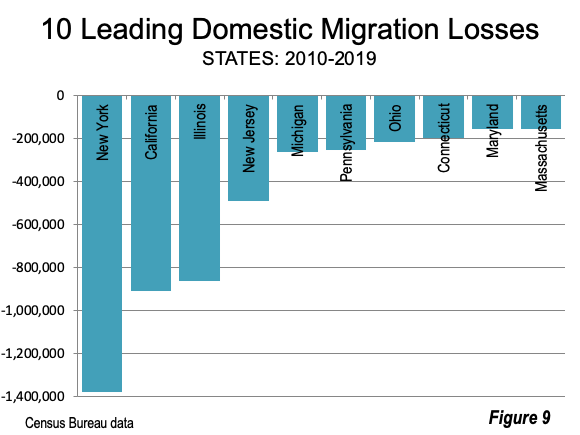
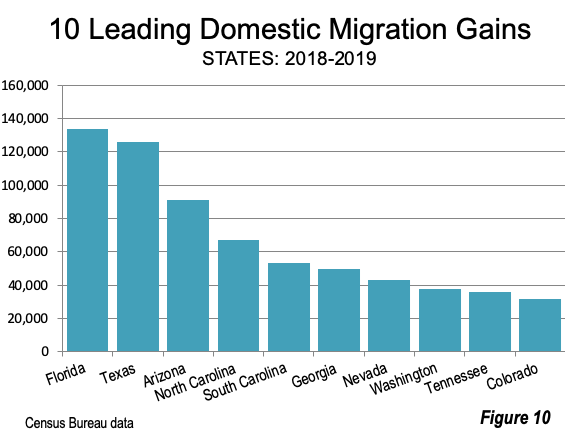













Figure 1 legend error
The legends of Figure 1 should be swapped, i.e. Green should be California, and Red the US. This would then match the text.
Re: Figure 1 legend error
Thanks for the catch! That has been corrected.